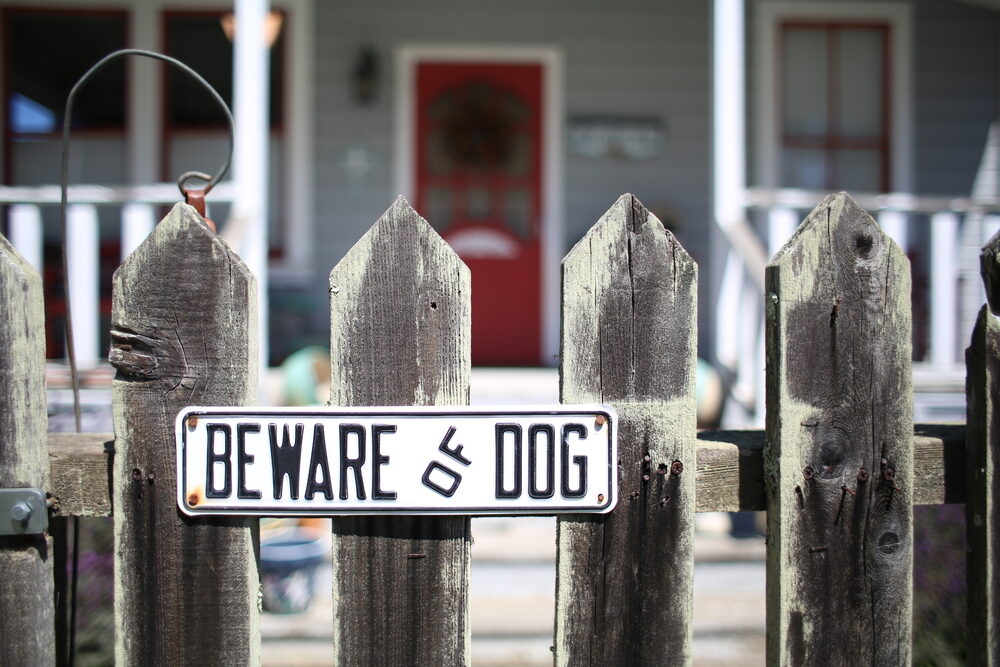Necessary Changes: A Push for Stronger Dog Bite Laws
According to the American Veterinary Medical Association, close to 60 million households include a dog. Unfortunately, the popularity of canines has a downside. The Centers for Disease Control and Prevention (CDC) has reported that more than four million Americans are bitten by dogs every year. In addition, a report by the United States Postal Service, which deals with dangerous dogs and employee safety daily, states that in 2023, the most recent year available, there were more than 5,800 incidents involving dog attacks on postal workers.
While some dog bites are minor, others can result in serious injuries that lead to medical bills totaling thousands of dollars. The more severe the attack, the greater the likelihood that a dog’s teeth or claws will cause tears, lacerations, or puncture wounds to the skin, potentially resulting in heavy bleeding, soft tissue injuries, or nerve damage.

There is also the grim possibility that a victim could suffer a fatal injury.
We are a dog-loving nation, but can more be done to keep Americans safe from dangerous dogs?
Understanding How the System Handles Dangerous Dog Cases
Generally speaking, state lawmakers are responsible for regulations surrounding dangerous dogs in each state. In most areas of the country, a dog owner is considered liable for a dog bite or attack through strict liability or what is known as the “one-bite” rule.
Strict liability dictates that even if the dog had no prior history of aggression, the dog’s owner is primarily responsible when the canine bites or attacks someone. Under strict liability, owners are financially liable for both the injuries sustained by the victim and property damage.
Under the “one-bite’’ rule, while liability still falls on the owner, it gives the dog owner some room. Unless there is already a known history of aggression, an owner can sometimes avoid liability if it is the first time a dog bites or attacks an individual.
Along with the determination by the states to either use strict liability or the one-bite rule (or in a few states, a combination of both), local municipalities often create separate mandates to further protect their residents.
A Florida Dog Attack Tragedy
A heartbreaking case in the news that has forced state lawmakers to focus on changes to dangerous dog laws occurred in August of 2022 in Interlachen, a small town in Putnam County, Florida.
Pam Rock, 61, was a U.S. postal worker delivering packages when her vehicle broke down. As she worked to diagnose the issue, five dogs who had escaped from an enclosed yard attacked her. Residents heard her screams and were eventually able to get the dogs off of her and call paramedics.
She was airlifted to Shands Hospital in nearby Gainesville, but died from the injuries approximately 24 hours after the attack
According to news reports, when the Putnam County Sheriff’s Office and the State Attorney’s Office investigated the incident, they found that the owner of the dogs had previously attempted to surrender them to the county’s animal control division and determined that although there was a history of previous attacks involving the dogs, no charges would be filed. The dogs were euthanized.
Tragically, the Pam Rock case shows a disconnect between the owner’s actions and law enforcement.
The Pam Rock Act
Rock was the youngest of 14 children, and after her death, her siblings channeled their grief into action by creating “the Pam Rock Act,’’ advocating for the state legislature to implement stronger measures to protect Floridians from dangerous dogs.
The proposed law (HB593), which is moving through the Florida House of Representatives and Senate, would add more requirements to the current Florida state statute.
While Florida is already a strict liability state, under the proposed law, dog owners would be required to do more to keep a dog that has been identified as dangerous (aggressive).
The Pam Rock Act would establish a new, statewide dangerous dog registry managed by the Department of Agriculture and Consumer Services. It also would mandate that the dog be microchipped to prevent it from being adopted and that owners hold an annual, billed certificate of registration from an animal control authority confirming the dog is spayed or neutered.
Liability insurance coverage of at least $100,000 would also be required.
Owners who violate the law’s provisions could be fined $1,000, and if the dangerous dog causes serious injury or death, the owner could face felony charges.
The Rock family is hoping to see Governor DeSantis sign it into law by July 1, just shy of what would have been their sister’s 64th birthday.
Steps to Take After a Dog Bite
In addition to seeking immediate medical treatment for a dog bite, you should gather information related to the attack, including the name and address of the dog’s owner, confirmation on whether or not the dog is up-to-date on its shots, pictures of the dog and the wound, and any information concerning previous attacks.
Once this is done, you should contact the local animal control authority, reporting the attack to ensure another incident does not occur and others are not harmed.
A dog bite victim should also consider reaching out to a personal injury attorney experienced in dog bite cases to ensure that those who were negligent are held accountable. An attorney’s experience is invaluable due to their understanding of dog bite laws in different states and municipalities.
Dog bite injuries can result in long-term physical, emotional, and financial consequences. Victims often face costly medical bills, ongoing treatment, and lasting trauma. Legal action and strong, well-enforced legislation play a vital role in protecting the public from dangerous dogs and encouraging responsible pet ownership.

















